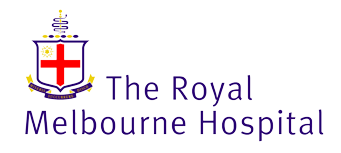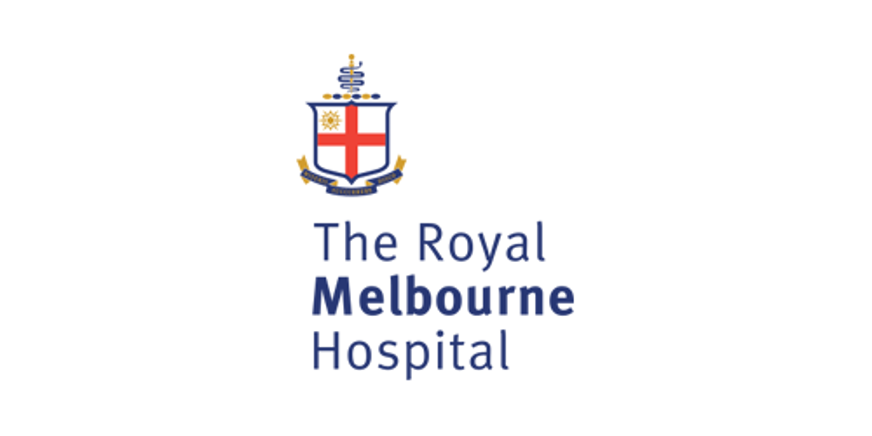

The Royal Melbourne Hospital (RMH) is one of Australia’s leading public teaching hospitals for tertiary health care with around 550 beds. RMH is at the forefront of innovation, researching new ways of diagnosing, treating and preventing diseases. RMH’s Environmental Services team is responsible for cleaning and following infection control protocols.
One of the major tasks is performing rigorous and thorough cleaning protocols with traditional mopping methods. This placed significant manual handling strain on the body, posing a Workplace Health and Safety (WHS) risk to staff. To address the concerns of staff and to reduce and even prevent injury, RMH implemented a roll-out of Rubbermaid Commercial Products (RCP) HYGEN Microfibre system throughout the facility.
BUSINESS OBJECTIVES
The hospital’s Support Services and OHS management was concerned about the manual handling movement risk associated with its cleaning methods. Environmental Services staff used a traditional wringer mop and bucket system to clean floors, which posed several health and safety issues.
Firstly, the large floor area required a lot of repetitive movement, pressing the mop onto the floor, and involved multiple trips back to the cleaner’s room to refill buckets of water. Secondly, wringing the mop to remove excess water and lifting heavy buckets placed significant stress on the body. The average age of the workforce was over 55. A staff survey indicated wet mopping caused discomfort.
Considering all these factors, RMH recognised its wet mopping method was a high risk activity and resolved to find an alternative, superior system. The management team began evaluating different cleaning methods and technologies. After reviewing the latest literature and industry benchmarks, the Support Services team chose to partner with Rubbermaid Commercial Products (RCP).
“We made the decision to review our cleaning process. The main aim was to progress from wet mopping to microfibre mops. We wanted a brand that was recognised within the industry and had the ability to provide ongoing support,” said Support Services Manager, Dobre Milenkovski.
THE SOLUTION
In April 2016, a staged roll-out of the new system commenced in the Intensive Care and Oncology units. The Rubbermaid HYGEN Microfibre system comprised Launderable and Disposable HYGEN Microfibre Cloths and Microfibre Damp Mop pads, plus light-weight, ergonomic cleaning hardware all stored in the Rubbermaid High Security cleaning carts.
Milenkovski explained, “We have beautiful white floors in the patient rooms inside the Oncology unit. The difference after using the Rubbermaid HYGEN Microfibre flat mop on the white floors has been noticeably better. We’re no longer moving grey water around from one corner to the next.”
“We’ve been told the team does an outstanding job in the oncology ward, and the standard they’ve set has become the benchmark,” said Milenkovski.
To support the full facility-wide roll-out, the Support Services and OHS teams conducted a comprehensive manual handling assessment with workplace biometric analysis firm, DorsaVi. ViSafe wireless motion sensors measured how a cleaner moved when using both the Rubbermaid HYGEN microfibre mop and a traditional wringer mop and bucket system to clean a hospital room and bathroom.
The ViSafe assessment found that overall, the Rubbermaid HYGEN Microfibre mop posed a 20% lower movement risk than traditional wet mopping. Furthermore, HYGEN microfibre mopping was observed to be more evenly symmetrical for the shoulder range of movement. The cleaner spent 49 per cent less time outside the preferred movement range, and 33 per cent less time outside the preferred shoulder range of movement (overall) compared to wet mopping. Microfibre mopping action was completed closer to the body’s core than wet traditional mopping, and the sensors detected a lower muscle activity (EMG) for lower back and shoulder with Microfibre.
IMPLEMENTATION
Following the successful stage one roll-out, the Rubbermaid HYGEN Microfibre system was introduced to all bed-based areas at RMH City Campus, and is expanding to the RMH Royal Park Campus within the next six months.
One of the most pleasing and positive results of the Microfibre implementation was the engagement and enthusiasm of staff. Often, change can be met a degree of resistance and fear. However, employees were overwhelmingly positive and receptive.
“We introduced staff to the new products in a demonstration information session and had full attendance by all rostered staff that day,” remarked Milenkovski.
“Considering many have been working with traditional cleaning technology for decades, it was impressive to see how quickly they embraced a completely new system. The engagement has been amazing,” said Milenkovski.
“The new Rubbermaid carts make our staff feel empowered. They feel proud to use such professional and sophisticated-looking equipment and they get consistently high-quality results. All their tools of trade are stored in the lockable carts too, which ensures the system is secure as they move through busy areas like the Emergency Department,” he explained.
Comprehensive training helped build staff buy-in and facilitate a smooth transition to the new Rubbermaid HYGEN Microfibre system. Support Services Manager Dobre Milenkovski, together with Manager - Safety, Risk and Improvement, Peter Thlimenos, OHS Consultant Edwina Beeston and Rubbermaid Product trainers conducted hands-on product demonstrations and showed video footage from the ViSafe biometric assessment. These engaging training sessions, combined with the professional resources and ongoing support provided by Rubbermaid Commercial Products gave the team tremendous confidence in the new technology.
“Customer support from Rubbermaid has been outstanding. Rubbermaid have been readily available to come to the hospital and facilitate ongoing training as well as offering hands on support,” Milenkovski said.
“Our staff feel valued and listened to. One staff member said the new products were amazing and much better than the traditional mop,” added Thlimenos.
RESULTS | RETURN ON INVESTMENT
The staff provided immediate feedback about their experience using Rubbermaid Microfibre mops and cloths. They reported the amount of manual handling stress and strain was reduced considerably, and they were able to get outstanding hygienic results. Also, the risk of chemical exposure to staff and patients had been eliminated.
Peter Thlimenos, Manager – Safety, Risk and Improvement explained that the WHS improvement is not just limited to the experience of staff.
“From a patient perspective, we are able to mop busy thoroughfares without creating a dangerous slip hazard for patients and visitors walking through the ward. We’ve received some positive feedback that high-traffic areas are clean and dry much faster, thus reducing the risk of any slips, trip and falls,” said Thlimenos.
While addressing the manual handling concerns and reducing WHS risk was a key driver to the investment decision, the new system has delivered many additional benefits.
The colour-coded system – with different coloured buckets and different colour cloths and pads – simplifies and streamlines the cleaning process. The yellow cloths and buckets are used exclusively for isolation cleaning, in-line with national standards for infection control and hazardous waste colour-coding.
Being a lockable system is another advantage, as cleaners can be confident detergents and equipment will be safely stored and controlled.
Productivity and time management improved significantly and cleaners now working more efficiently. Once the Rubbermaid HYGEN Microfibre mops and cloths are charged, they are ready to go, allowing staff to clean continuously without walking back and forth to the cleaner’s rooms to dispose of dirty water.
The improvement in discharge cleaning speed is very noticeable when the demand for patient beds is high.
Milenkovski explained, “Our isolation discharge teams needed to clean all surfaces and equipment, including walls, in a three step process. Previously, they used small disposable sponge mops to mop walls, which was time-consuming. Now with the Microfibre technology, walls are cleaned effectively, in a fraction of the time.”
“By using more ergonomic microfibre mops instead of wet mopping we have reduced the manual handling risk for employees. Our staff love the microfibre system and are achieving noticeably improved, more efficient cleaning results. The investment in new state-of-the art tools makes staff feel valued and empowered,” added Milenkovski.
“By using more ergonomic microfibre mops instead of wet mopping we have reduced the manual handling risk for employees.
Our staff love the microfibre system and are achieving noticeably improved, more efficient cleaning results. The investment in new state-of-the art tools makes staff feel valued and empowered.”
DOBRE MILENKOVSKI
Support Services Manager
Royal Melbourne Hospital
(i) DorsaVi ViSafe test Royal Melbourne Hospital, November 2016